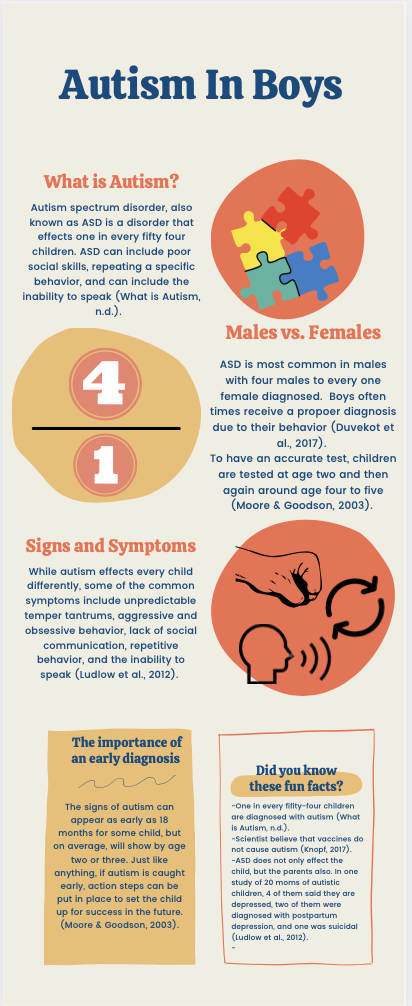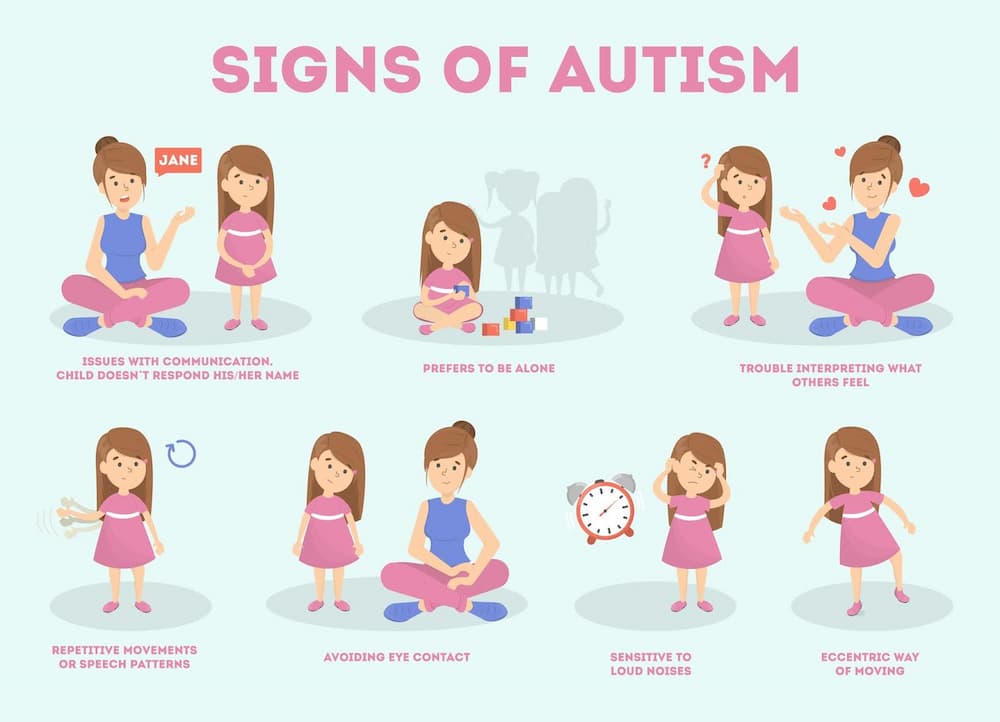How an Aba Therapist Near Me, your child may experience big changes in social and communication growth
How an Aba Therapist Near Me, your child may experience big changes in social and communication growth
Blog Article
Comprehending the Effect of Behavioral Autism on Daily Life and Social Interactions
You could not realize exactly how deeply behavioral autism influences life and social communications. Individuals on the range typically browse a world loaded with interaction obstacles and sensory overload. These challenges can result in stress and seclusion, impacting their partnerships and general health. Recognizing these nuances is essential for fostering encouraging settings. What approaches can we apply to develop more meaningful connections and comprehensive spaces? The answers might amaze you.
Specifying Behavioral Autism and Its Qualities
Behavior autism, usually referred to as autism spectrum problem (ASD), encompasses a range of problems characterized by challenges in social interaction, communication, and repeated habits. You may see that people with ASD often struggle to analyze social signs, which can bring about misunderstandings in conversations. They may locate it hard to develop eye get in touch with or involve in tiny talk, making social situations really feel frustrating.
Communication problems can materialize in different ways, from postponed speech advancement to a preference for utilizing less words. Recurring habits, such as hand-flapping or rocking, can function as coping devices to take care of stress or sensory overload. These attributes can greatly influence day-to-day live, making it important for you to comprehend and sustain those with ASD. By recognizing these characteristics, you can promote a setting that promotes acceptance and motivates effective interaction, assisting individuals with autism prosper in their everyday interactions.
The Range of Autism: Recognizing Irregularity in Habits
Autism spectrum condition (ASD) isn't a one-size-fits-all diagnosis; it varies extensively amongst individuals. You may see that some people with ASD exhibit moderate symptoms, while others may deal with a lot more substantial obstacles. This variability can manifest in habits, passions, and sensory sensitivities. You might run into people that are very verbal and involve quickly in conversations, while others may prefer solitary tasks or connect non-verbally.
Additionally, the way people with ASD react to sensory input can vary substantially; some may be bewildered by brilliant lights or loud sounds, whereas others grow in promoting settings. The spectrum additionally consists of distinctions in social interactions; some people might have a hard time to interpret social signs, while others browse social settings with relative simplicity. Recognizing this variability is important, as it aids you appreciate everyone's unique experience and tailor support to their particular demands, fostering a much more inclusive environment for everyone.
Interaction Difficulties Faced by People With Autism
When you engage with people on the autism spectrum, you may notice their distinct communication obstacles. They frequently deal with troubles with both nonverbal and verbal cues, which can influence their social interactions. Comprehending these obstacles is crucial for cultivating much better links and support.

Verbal Communication Troubles
Lots of individuals on the autism range experience verbal communication difficulties that can substantially affect their day-to-day interactions. You may find it testing to reveal your thoughts, feelings, or requires plainly. This can bring about disappointment for both you and those around you, as misunderstandings take place. You may deal with initiating discussions, preserving a subject, or understanding subtleties in speech. Typically, you could favor making use of basic language or repeated phrases, which can limit your capability to participate in deeper discussions. Your tone, speed, or quantity may not align with social assumptions, causing others to misunderstand your purposes. Acknowledging these challenges can help you and your assistance network establish techniques to improve interaction and promote much better connections with others in your life.
Nonverbal Communication Obstacles
Spoken communication isn't the only challenge individuals on the autism range face; nonverbal interaction barriers can be equally as substantial. You might find it difficult to analyze body language, faces, and eye call, which are important for effective interaction. These difficulties can lead to misunderstandings or misconceptions of social signs, making interactions really feel overwhelming or complex. You might struggle to express your own feelings via nonverbal ways, leaving others unsure of your feelings or objectives. This disconnect can create feelings of seclusion and stress. Acknowledging these barriers is crucial for promoting understanding and empathy in your communications. By attending to nonverbal communication, you can find strategies to boost your social experiences and improve your total lifestyle.
Social Communication Effects
Social communications can frequently really feel overwhelming as a result of the one-of-a-kind interaction obstacles encountered by individuals with autism. You could battle with analyzing social signs, making it difficult to comprehend sarcasm or body language. This can lead to misunderstandings or uncomfortable minutes in discussions. Furthermore, initiating and keeping discussions might feel tough, creating anxiety in social circumstances. You may favor structured settings, making spontaneous interactions uneasy. It's additionally typical to experience difficulty in participating in small talk, which can impede developing brand-new relationships. Identifying these challenges can help you discover strategies to enhance interaction, such as practicing social skills in secure setups or utilizing aesthetic help - Aba Therapist. Comprehending your demands enables you to navigate social communications with higher self-confidence and convenience.
Social Interaction and Relationship Structure in Autism
While building connections can be testing for individuals with autism, understanding their distinct perspectives and interaction styles can promote significant connections. You could see that numerous individuals on the range like direct interaction and might deal with social cues or little talk. By being simple in your communications, you can help develop a setting where they really feel comfortable.
Take the time to listen and observe just how they reveal themselves. This understanding can lead you in steering discussions better. Participating in shared rate of interests can additionally act as a bridge to deeper links. Whether it's a pastime, a favored program, or a common enthusiasm, these typical strings can open doors to friendship.
Daily Life Routine: Navigating Techniques and obstacles
Steering everyday life regimens can be specifically testing for people with autism, specifically when unexpected modifications happen. To browse these difficulties, take into consideration carrying out aesthetic timetables or lists.
Developing a routine that includes sensory breaks can likewise be valuable. This aids create an understanding setting.
Finally, practice mindfulness strategies to take care of tension and anxiousness. Basic breathing exercises or grounding methods can make a considerable difference. By integrating these approaches, you can improve your everyday regimen and minimize interruptions, making life feel much more convenient.
Toughness and Capabilities of People on the Autism Range
Recognizing daily life routines is simply one facet of the autism experience. Numerous people on the autism spectrum have amazing toughness and abilities that set them apart.
Moreover, your memory skills usually beam, especially in areas of rate of interest. Aba Therapist Near Me. This more info flair for maintaining details can make you a useful source in fields like innovation, scientific research, or art. You might likewise display solid aesthetic thinking, enabling you to imagine complex concepts and fix problems creatively
Furthermore, your special viewpoint on the world can cultivate compassion and understanding in others, improving social communications. Accepting these strengths not just enhances your self-confidence yet likewise assists others appreciate the diverse skills you offer the table.
Producing Inclusive Settings for Individuals With Autism
Creating inclusive environments for individuals with autism starts with creating sensory-friendly areas that deal with their special demands. You can likewise promote chances for social interaction, aiding to build relationships and connections. By making these modifications, you'll add to a more welcoming atmosphere for everyone.
Creating Sensory-Friendly Spaces
While developing sensory-friendly spaces, it's important to assess the distinct needs of individuals with autism. Start by picking relaxing colors and soft lighting to produce a soothing atmosphere. When overwhelmed, integrate quiet zones where individuals can pull back and charge. You'll want to reduce loud noises and distractions, using soundproof products or white sound makers to help preserve serenity. Consider responsive elements like soft textiles or fidget-friendly items that can provide convenience. Identify that rooms are flexible, enabling very easy rearrangement to suit different activities. Include aesthetic timetables or clear signs to assist people browse the room with confidence. By attentively incorporating these aspects, you can develop a welcoming environment that supports sensory requirements and promotes overall health.
Promoting Social Communication Opportunities
Creating sensory-friendly spaces not just addresses specific convenience however also establishes the stage for meaningful social interactions among individuals with autism. To advertise these interactions, create inclusive settings that invite participation. Arrange structured tasks, like art classes or team games, that urge collaboration without frustrating sensory input. Usage aesthetic help and clear communication to help everyone engage conveniently. Encourage peer mentoring, pairing individuals with autism with supportive peers who can lead them with social circumstances. Furthermore, take into consideration organizing routine community occasions that commemorate neurodiversity, promoting approval and understanding among all individuals. By executing these strategies, you can improve social possibilities, assisting individuals with autism construct friendships and strengthen their social abilities in a secure, welcoming atmosphere.

Often Asked Concerns
How Can Buddies Assistance Somebody With Behavioral Autism?
You can support a friend with behavioral autism by holding your horses, listening actively, and valuing their boundaries. Participate in tasks they delight in, connect freely, and produce a comfy environment where they really feel valued and understood.
What Resources Are Available for Moms And Dads of Kid With Autism?
You can explore different resources for parents of children with autism, consisting of support system, educational web sites, and neighborhood area services. Getting in touch with other parents can also offer valuable insights and shared experiences to help navigate obstacles.
Can Behavioral Autism Change With Time?

Yes, behavioral autism can alter gradually. You might observe changes in interaction, social abilities, and actions as your kid expands. Early treatment and assistance frequently play essential duties in these developmental adjustments.
Just How Do Sensory Sensitivities Influence Every Day Life?
Sensory level of sensitivities can make everyday experiences overwhelming. You could battle with intense lights or loud sounds, bring about stress or evasion. Discovering environments that accommodate your requirements can considerably enhance your convenience and overall every day life.
What Are Typical Misconceptions Regarding Behavioral Autism?
You might assume behavior autism just impacts interaction abilities, however it's even more complicated. Numerous think people do not have compassion or knowledge, which isn't true. Understanding these misconceptions aids foster approval and support for those on the range.
Behavior autism, commonly referred to as autism range problem (ASD), incorporates a variety of conditions identified by challenges in social interaction, interaction, and repeated actions.Social interactions can often really feel frustrating due to the special interaction difficulties faced by individuals with autism.Creating sensory-friendly spaces not only addresses individual comfort however likewise sets the phase for significant social interactions among individuals with autism. Encourage peer mentoring, coupling people with autism with helpful peers who can direct them via social scenarios. By executing these strategies, you can boost social possibilities, assisting people with autism build friendships and strengthen their social skills in a safe, inviting environment.
Report this page